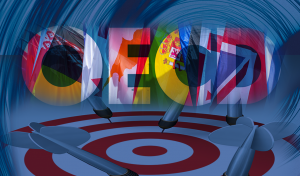Let’s face it: Corporate training isn’t much fun.
Sure, it may feel crucial, but many workers approach it reluctantly, racing through lessons as quickly as possible so they can get back to their actual work, often failing to fully absorb the material being taught.
To fix that, some employers are turning training into a game, adopting platforms that rely on videogame design, with gamelike elements such as progression through levels, instant feedback and competition to keep employees engaged and motivated to learn.
Still, that leaves a big question: Does turning training into a game actually work?
A study I conducted with Ryan Buell and Tatiana Sandino of Harvard Business School explored that question, using data from KPMG, a global professional-services firm. KPMG in 2016 began rolling out a gamified training platform to educate employees about the firm’s broader offerings in the hopes of making them more aware of potential services they could offer clients. The firm staggered the launch of the tool across 24 offices, allowing us to analyze what effect, if any, the training had on the company’s performance.
Employees weren’t required to take part in the gamified training, but those who did “raced around the world” by answering questions about KPMG’s offerings. Challenges rewarded employees with points and allowed them to advance to new levels. They received instant feedback on their game performance and engaged in friendly competition with the platform’s other users.
Over a period of 29 months beginning in July 2015, we analyzed a variety of performance measures monthly for each office to see if the training was making a difference.
This led us to three important findings.
First, the use of the platform paid off significantly for KPMG. The offices that used it increased fees collected from clients by more than 25% on average, the number of clients served by as much as 16%, and the number of business opportunities from new clients by as much as 22%.
Performance improvements, however, were much more pronounced under certain conditions. For example, offices with more engaged employees—as measured by the percentage of employees willing to log onto the platform and how quickly they did so—increased overall fees collected from clients by 16% more than offices that used the platform but had fewer engaged employees. The offices with more engaged employees also experienced stronger gains in business opportunities from both new and existing clients.
Finally, we found that manager participation in the training led to a notable increase in officewide performance metrics.
Based on our findings, here are some tips for organizations interested in gamified training:
Have managers set an example
The novelty of gamified training is a double-edged sword. While games may be a more engaging way to gain knowledge, some employees may perceive them as being too fun to focus on during working hours. After all, nobody wants their manager to think they are playing around when they are supposed to be focused on work.
Therefore, it is important for leaders to set an example by logging onto these platforms themselves during work hours. In doing so, they make clear that playing on the job isn’t just tolerated by management but encouraged. By embracing gamified training, leaders can influence hesitant employees to do the same, while also enhancing their own knowledge.
At KPMG, we found that the offices with the highest partner-participation rate in the training increased fees collected from clients by as much as 19% more than offices with lower partner-participation rates.
Don’t expect overnight success
Improvements sparked by gamified training won’t materialize overnight. Many platforms will become popular through word-of-mouth, which takes time, and employees gain knowledge only after extensive interaction with the learning tool.
At KPMG, for example, we observed that performance improvements largely didn’t occur until several quarters after the platform launched in a given office. More than a year after launch, performance continued to rise.
A long-term approach also gives leaders ample time to solicit employee feedback about the training platform and make adjustments. Gamification aims to make learning itself enjoyable, so leaders should lean into opportunities to make the experience of using it more enriching and fun.
Focus on officewide outcomes
The best way to judge whether gamified training is working is to focus on officewide performance, rather than improvements in individual employees or certain groups of employees.
We found that the individuals who benefited the most from gamified training were those who are already highly engaged in their work, but that doesn’t mean other employees didn’t benefit, too. Investments in employee training and development don’t operate in isolation. Workers who are more willing to participate in gamified-training platforms may share their newly gained knowledge with co-workers, creating positive spillovers that are more accurately captured by officewide metrics.
By following these guidelines, companies can increase the odds that gamified training will pay off. It also helps if an organization has a clear, measurable goal it wants to address through the training. In KPMG’s case, the goal was to prepare employees to cross-sell the firm’s services. Our analysis shows the effort was a success.
Wei Cai is an assistant professor of business at the Columbia Business School. She can be reached at reports@wsj.com .



